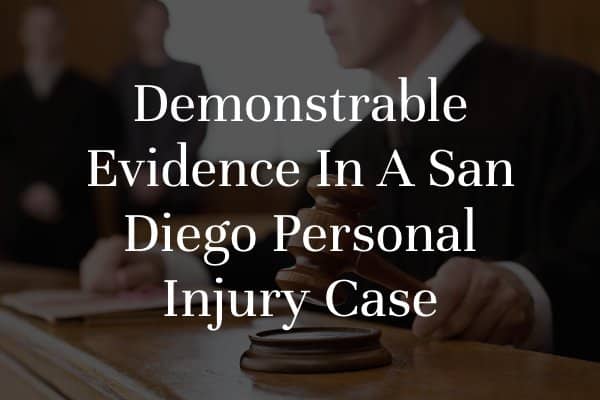To successfully recover compensation in a personal injury case, an essential element is demonstrable evidence. This type of evidence establishes the defendant’s (at-fault party’s) liability in causing your harm.
Common Types of Demonstrable Evidence
Demonstrable evidence can come in many forms, but its main feature is that it is visual. Common types of demonstrable evidence include the following.
- Photographs
- X-rays and MRI scans
- Video Footage
- Charts and diagrams
- Maps
- Illustrations
- Physical and virtual models
- Animations
These types of evidence allow a judge or jury to conceptualize the severity of an injury, the defendant’s negligence, and the extent of damages (losses) for which you are entitled compensation.
How Demonstrable Evidence is Used

To hold another party responsible for your injury, you must be able to prove that their negligence is what caused it. Negligence is the failure to provide the expected standard of care in a given situation. To be able to prove another party was negligent, the following four elements must be present in your case and proven with demonstrable evidence.
Duty of Care: The defendant owed the plaintiff (victim) a duty of care.
For example, suppose you were injured in a car accident, and the defendant is another driver. The defendant owed you a duty to care since drivers are required to drive safely and follow traffic laws. Photos and videos taken of the accident or the scene can establish that the defendant was driving a vehicle involved in the accident.
Breach of Duty: The defendant breached their duty of care by failing to act how another reasonable person would in a similar situation.
For example, the defendant ran a red light and crashed into your vehicle. Some types of demonstrable evidence that can prove the defendant breached their duty are a traffic camera recording of the accident, photos of the damage to your vehicle, skid marks or debris on the road, or a diagram or illustration that recreates the accident showing how the accident must have occurred based on the location of the damage on your vehicle.
Causation: The defendant’s actions directly led to the plaintiff’s harm.
In other words, you would not have been injured but for the defendant’s actions. For instance, if the driver had stopped at the red light, they would not have crashed into your vehicle. Types of demonstrable evidence that can establish causation include surveillance footage or video taken by a witness showing the defendant crashing into your vehicle, photos of your injuries from after the accident, and x-rays from the emergency room immediately after the crash.
Damages: The plaintiff suffered damages as a result of the defendant’s negligence.
You must be able to prove damages for which you are entitled to compensation. For example, medical bills, property repair or replacement estimates or bills, copies of pay stubs, tax returns, and other proof of lost income can all demonstrate your financial losses. Demonstrable evidence to prove you should recover compensation for your pain and suffering or emotional distress includes medical records such as x-rays, skeletal models, and other diagnostic results. A medical expert will often use these types of visual evidence to explain the treatment required and how your injury will impact you in the future. Lastly, a daily journal documenting your pain, mental state, and physical limitations can also help the jury visualize your suffering.
Before trial, a judge must approve all demonstrable evidence before it can be presented in front of a jury. Therefore, working with a skilled San Diego Personal Injury Attorney is critical.

